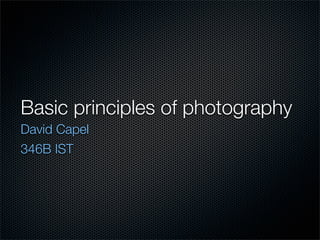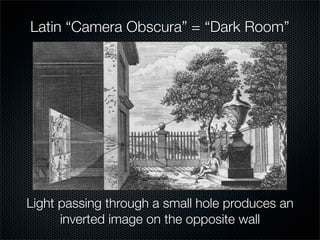The document outlines the evolution of photography from the camera obscura to modern digital cameras, detailing key concepts such as exposure, aperture, and focal length. It discusses the mechanics of capturing images and the importance of controlling light through shutter speed and aperture to achieve desired photographic effects. Additionally, it highlights various camera modes available in modern DSLRs that cater to different shooting preferences and conditions.











































